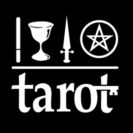Elemental Dignities is a very simple and powerful method of tarot divination. I love elemental dignities. I use the system in every tarot reading reading I do for clients. Court cards can be scary for tarot students and some tarot teachers, but with ED’s the court cards are easy to read. I see my students go from being scared to embracing them! Using Elemental Dignities helps you to develop your psychic powers, so its win-win all the way. Using ED’s needs a paradigm shift. This system ignores the divinatory meanings, and then meanings are integrated. To use Elemental Dignities, we go back to basics. Almost all the 78 tarot cards have their basis in one of the four elements – Fire, Water, Air and Earth. This is easy to relate to the Minor Arcana and the Court cards:
- Fire – Wands
- Water – Cups
- Air – Swords
- Earth – Disks or Pentacles
For the Major Arcana, we use the astrological attributions for the zodiac cards. Aries is fire, and related to The Emperor, Taurus is Earth and related to The Hierophant, and so on. The Fool is Air, The Hanged Man is Water, and the Universe or World is Earth.
Planets and Elements
The planets do not have elemental attributions. Thus The Magus, High Priestess, Empress, Fortune, Tower and Universe/World do not have elemental attributions.
You might have noticed a contradiction for the Universe/World. It is Saturn and Earth, and it depends on how the tarot reading is working for the reader to know the difference. Try both and see what works.
Now we know the elemental attributions of the tarot cards, we can look at how the elements interact with each other. In simple terms for the elements to be activated, they have to be given a polarity such as Active and Passive. Then we have to know how the elements then relate to each other using another polarity – Friends or Enemies.
We can now create some simple rules:
- Fire and Air are active, while Earth and Water are passive.
- Fire and Water are enemies
- Air and Earth are enemies
- All other permutations are friendly
Some people worry about the use of “enemy”, but it is simply the opposite of “friend” – they define each other. If you think about it, you will realise that there are far more friendly combinations than inimical ones. Active and Passive combine to create the friend/enemy combinations with one more – Neutral.
For example, Fire is active, Water is passive, so they cancel each other out, and are enemies. Fire is active and friendly with Air (active), so they are very active. Fire is friendly with passive Earth, so they can cancel each other out, but they are friendly and therefore powerful.
Earth and Water are friendly and passive, which creates a very passive combination. As an exercise you need to go through all the permutations so you see how the cards are relatively stronger, weaker, friendly or inimical, or neutral to each other. Then you can add the divinatory meanings. Here is a simple example:
Knight or King of Wands and Two of Cups
The King is fiery, but does not trust his feelings – he feels insecure about expressing emotions.
The Queen of Cups and Two of Cups
Two passive cards – she is in love, but does not know what to do about her feelings.
Now we can combine the cards, and we see that she really likes and is attracted to the King (Opposites attract as well as weaken), but either does not know she likes him, or he has difficulty expressing his feelings. The missing elements are Air and Earth, which are both friendly to the King and the Queen, so we have to find those cards which give common ground – Air can be intellectual stimulation – they both support the same political party, or something practical – they have similar work interests. You get the idea.
Elemental Dignity Resources
So now you know how Elemental Dignities work, you can start to explore. I have a lot of videos on Youtube explaining in greater detail. Catherine Chapman is a great teacher on EDs. If you use EDs, let me know of your experiences!
